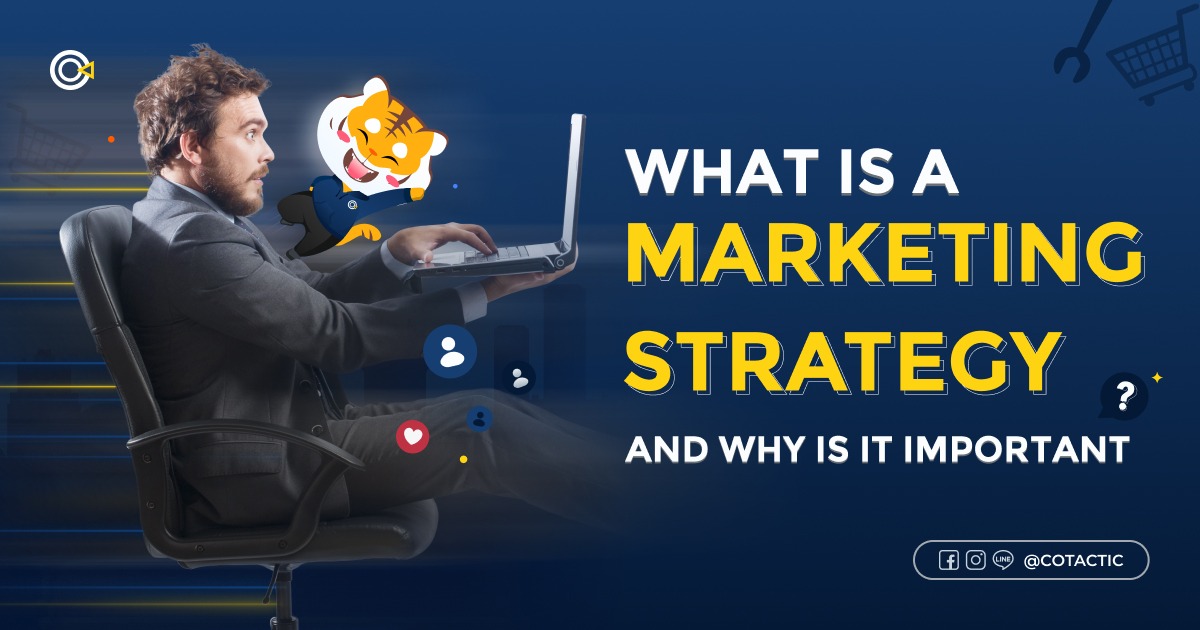What is a Marketing Strategy and Why is it Important?

In this article, we will explore the concept of marketing strategy in depth, including its importance, how it influences different stages of a business’s life cycle, new trends in marketing strategy, and examples of the 8P Marketing Mix for businesses. We will also outline the steps involved in planning a marketing strategy.
What is a Marketing Strategy?
Marketing strategy is essential for business success. It is a comprehensive plan to reach potential customers and convert them into loyal clients. By identifying target markets, analyzing competitors, and crafting a unique value proposition, companies can differentiate themselves and achieve their business goals.
1. Understand Marketing Strategy
What is Marketing Strategy?
Marketing strategy is a company’s overall plan for reaching potential customers and turning them into loyal customers. It involves identifying target markets, analyzing competitors, and creating a unique value prop to differentiate the company.
Why is Marketing Strategy Important?
A well-defined marketing strategy is crucial for businesses of all sizes. It helps align marketing efforts with business goals, maximize return on investment (ROI), and build a strong brand presence. By understanding the target audience and their needs and wants, companies can tailor their marketing campaigns to deliver the right message at the right time.
2. Business Life Cycle and Marketing Strategy

How Business Life Cycle Influences Marketing Strategy
The business life cycle consists of four stages: launch, growth, maturity, and decline. Each stage requires a different marketing approach to address specific challenges and opportunities.
Stage 1: Launch
Businesses create awareness for their new products or services by building brand recognition, generating leads, and attracting early adopters.
Stage 2: Growth
During the growth stage, businesses experience rapid expansion and increasing sales. Marketing strategies shift towards acquiring new customers, penetrating new markets, and differentiating products from the competition. The goal is to capture a larger market share and establish a strong competitive position.
Stage 3: Maturity
The maturity stage is characterized by intense competition and market saturation. To maintain market share, businesses need to focus on customer retention, brand loyalty, and continuous innovation. Marketing efforts may involve product diversification, pricing strategies, and targeted promotions.
Stage 4: Decline
In the decline stage, businesses face declining sales and market share. Marketing strategies can aim to extend the product life cycle, identify new opportunities in related markets, or harvest the product for maximum profits. Companies may also explore cost-cutting measures, strategic partnerships, or exit strategies.
3. Emerging Marketing Strategies
Emerging marketing strategies are constantly changing, so businesses need to stay ahead of the curve by keeping up with the latest trends and technologies.
GTCMIT is a marketing tool that helps businesses develop and implement effective marketing strategies for businesses of all sizes. It provides a framework for creating a comprehensive marketing plan that includes goal setting, target identification, channel selection, key messaging, budget allocation, and timeline development.
By following the GTCMIT framework, businesses can create a clear and actionable marketing strategy that aligns with their business goals and maximizes return on investment (ROI).
Goal
Setting clear goals is essential for an effective marketing strategy. Goals should be specific, measurable, attainable, relevant, and time-bound (SMART). Examples of marketing goals include increasing brand awareness, driving website traffic, or boosting sales revenue.
Target
Identifying the target audience helps tailor marketing messages to specific customer segments. Businesses can use demographic data, psychographic profiles, or behavioral insights to define their target market accurately.
Channel
Choosing the right marketing channels ensures that marketing messages reach the intended audience. Marketers can choose from a variety of channels, including social media platforms, search engines, email marketing campaigns, content marketing initiatives, and traditional advertising channels.
Key Message
Crafting a compelling key message helps communicate the unique value proposition of a product or service to customers.. The key message should highlight the benefits of the product or service and resonate with the target audience’s needs and aspirations.
Investment
Allocating resources effectively is crucial for achieving marketing objectives. Businesses need to determine their marketing budget based on their financial capabilities and expected return on investment percentage (ROI).
Timeline
A timeline helps businesses execute marketing activities on time and track progress along the way. This creates a sense of urgency and ensures that all marketing activities are aligned with the overall marketing strategy.
4. Example of 8P MARKETING MIX for business
Product Strategy
The product strategy focuses on developing products or services that meet customer needs and preferences. It involves product design, features, quality control, packaging, branding, and intellectual property protection.
Pricing Strategy
Pricing strategy determines how businesses set prices for their products or services. Different pricing strategies include:
Premium Pricing
Setting higher prices to position products as premium offerings associated with quality or exclusivity.
Penetration Pricing
Setting lower prices to gain market share quickly or penetrate new markets.
Competitive Pricing
Offering products at affordable prices to cater to price-sensitive customers or emerging markets.
Price Skimming
Setting high initial prices for innovative products to maximize profits before competitors enter the market.
Psychological Pricing
Using pricing techniques such as odd-even pricing ($9.99 instead of $10) or bundle pricing (buy one get one free) to influence consumer behavior.
Placement Strategy
Placement strategy refers to how businesses distribute their products or services to reach customers effectively. It involves decisions related to distribution channels, logistics management, inventory control, warehousing, and order fulfillment.
Promotion Strategy
Promotion strategy focuses on creating awareness about products or services through various promotional activities such as advertising campaigns, public relations efforts, and sales promotions.
Packaging Strategy
Packaging strategy involves designing product packaging that attracts attention and communicates brand values effectively. It includes decisions related to packaging materials, design elements, labeling requirements, sustainability considerations, and legal compliance.
Personal Strategy
Personal strategy emphasizes building strong relationships with customers through personalized interactions. It includes customer relationship management (CRM), loyalty programs, customer retention initiatives, and personalized marketing campaigns. The goal is to create a positive and memorable experience for customers, fostering brand loyalty and long-term relationships.
Public Relations Strategy
Public relations strategy focuses on managing and improving a company’s reputation and public image. It involves building relationships with the media, influencers, and the general public to generate positive publicity and enhance brand perception. Public relations strategies often include media relations, press releases, events, sponsorships, and crisis management.
Power Strategy
Power strategy refers to using a company’s strengths to gain a competitive advantage in the market. It involves strategic partnerships, collaborations, acquisitions, or mergers to expand market reach, increase market share, or enhance product offerings. Power strategies aim to strengthen a company’s position in the industry and create synergies that drive growth.
5. Planning a Marketing Strategy
Step 1: Identify Your Business Stage
Understand the different stages of a business and how they impact marketing strategy development. Once you have identified your business stage, you can start to develop a marketing strategy that is tailored to your specific needs.
Step 2: Set Goals Related to Your Business Stage
This step is essential for any successful marketing strategy. By setting specific, measurable, achievable, relevant, and time-bound (SMART) goals, you can ensure that your marketing efforts are focused and effective.
Step 3: Develop Strategies to Achieve Your Goals
This step involves brainstorming and developing a plan for how you will achieve your marketing goals. It is important to consider your target audience, budget, and resources when developing your strategies.
Conclusion
A marketing strategy is a roadmap for achieving your business goals by understanding the needs of your target audience and developing a unique value proposition. It is essential for businesses of all sizes, as it helps you to focus your efforts and resources on the most effective marketing activities.
When developing your marketing strategy, it is important to consider your business stage, goals, target audience, and budget. You should also be aware of the latest marketing trends and technologies, and ensure that your strategy is flexible enough to adapt to change.
———————————————————————————————————————
If you are looking for a comprehensive digital marketing agency to help your business achieve its goals, contact Cotactic Digital Marketing Agency now to get a plan tailored to your needs!



